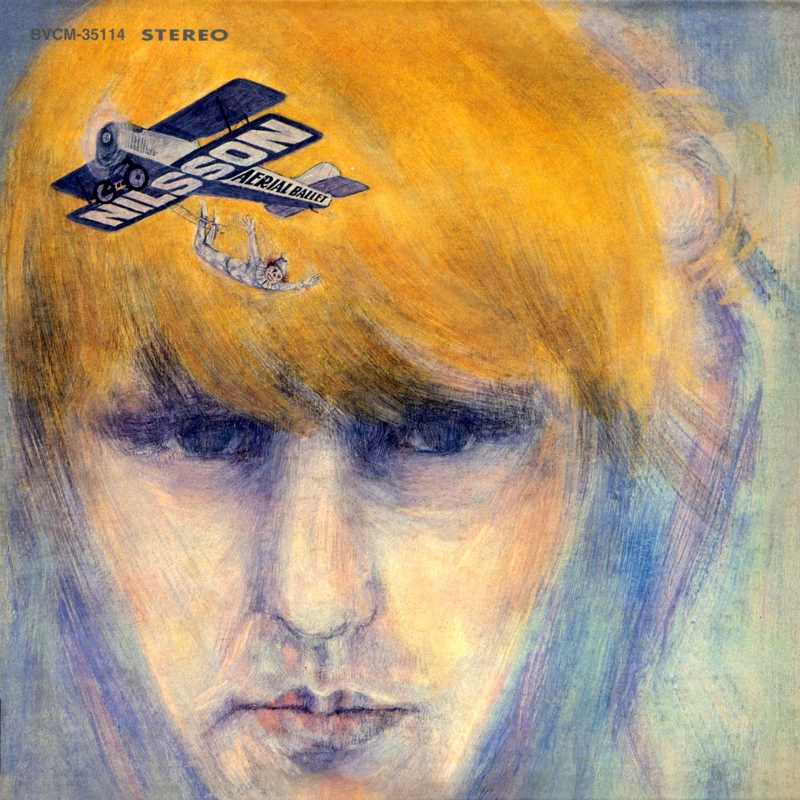Released at a time when receiving blanket praise from all four of The Beatles was unarguably A Big Thing, Aerial Ballet is the album that really should have launched Harry Nilsson’s career into the stratosphere. The fact that forty seven years after this album’s release, Nilsson is considered at best, a well respected cult artist with an impressive social circle, should in no way put you off investigating one of the most impressive baroque pop albums of the era.
A consistently brilliant songwriter throughout his career, Nilsson was already a widely celebrated lyrical genius by Aerial Ballet, his second album, but he’d already established a pattern on his albums of covering great songs by other artists in addition to his own great songs. Most people will recognise Nilsson’s cover of Fred Neil’s “Everybody’s Talkin'” which was featured prominantly on the Midnight Cowboy soundtrack, however the rest of the album is a joyous celebration of Nilsson’s songwriting genius.
There are few albums as shamelessly pop as Aerial Ballet, but in just over twenty five minutes it still manages to find space for songs as diverse as the shamelessly direct and pretty “Good Old Desk” and the lullaby-esque “Little Cowboy”. It’s not an album that tries to over-stretch itself by being over-ambitious, instead it’s an exceptionally focused audio portfolio of Nilsson’s songwriting and vocal skills. My two personal favourite moments of Aerial Ballet are among his greatest contributions to the American songbook. “One” is among the most covered of Nilsson’s songs and is just a fantastic pop song that effortlessly plucks the heart strings. Less celebrated, but no less brilliant, is “Mr Richland’s Favourite Song”, a song which expertly dissects the transitory nature of fame and celebrity.
Aerial Ballet’s brief run time inevitably means that it’s an album that never outstays its welcome, so it always leaves you wanting just a little bit more. Nilsson would of course go on to record better selling albums than Aerial Ballet, and enjoy a series of hit singles in the first half of the 1970s, which leaves Aerial Ballet as something of an oddly overlooked cult curio that deserves wider rediscovery.














No Comment